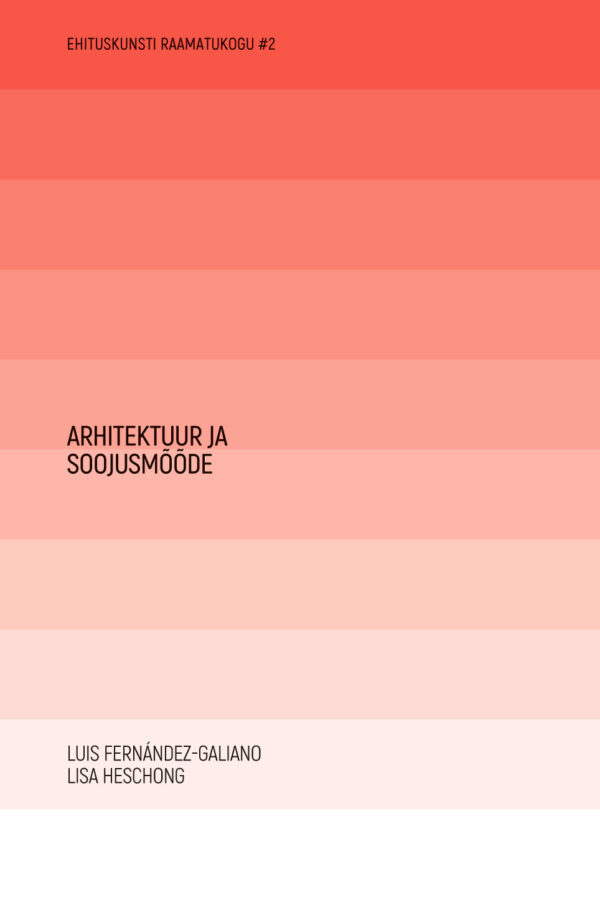
Volume 2 of the “Library of Ehituskunst” series is dedicated to the thermal dimension of architecture. If the architecture of the past had to take the thermal dimension into account, the uniformly comfortable temperature enabled by technology tends to make the rich spatial experiences that have developed in history uniform and repeatable. The challenge of today’s spatial practice is to develop these symbolic qualities of space arising from the thermal dimension in order to unlock the real experiential potential of space.
The collection consists of two texts: Luis Fernández-Galiano’s “Warm Space in Architecture: Architecture and Fire from Vitruvius to Le Corbusier” is a chapter from his book “Fire and Memory: Architecture and Energy” (El fuego y la memoria: sobre arquitectura y energía, 1991). It discusses the history and sociopolitical background of uniform thermal space. This is followed by the book “Thermal Delight in Architecture” (1979) by Lisa Heschong, which sets the ideal of a versatile thermal space instead of a room with a uniform temperature and explores ways to achieve it using the example of different spatial traditions.
“Architecture and thermal dimension” accompanies the 59th issue of the Ehituskunst magazine, which focuses on the relationship between cold weather and spatial practice from the point of view of a practicing spatial poet.
Translated by Mari Laan (Fernández-Galiano) and Ingrid Ruudi (Lisa Heschong)
Edited by Neeme Lopp
Language editor: Tiina Hallik
Designed by Martin Rästa
128 pages in Estonian
Estonian Academy of Arts Press, 2018
ISBN 978-9949-594-56-6
